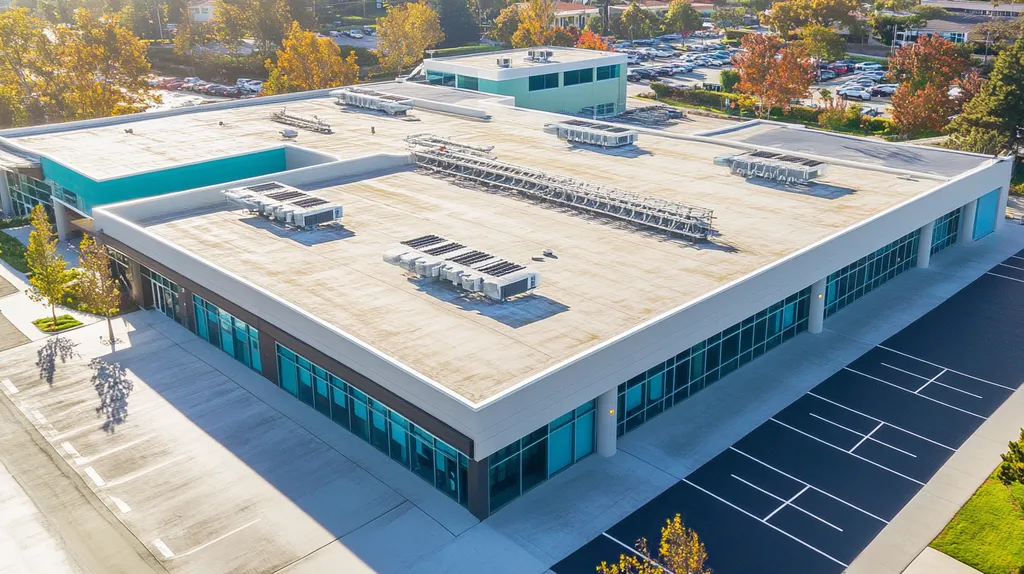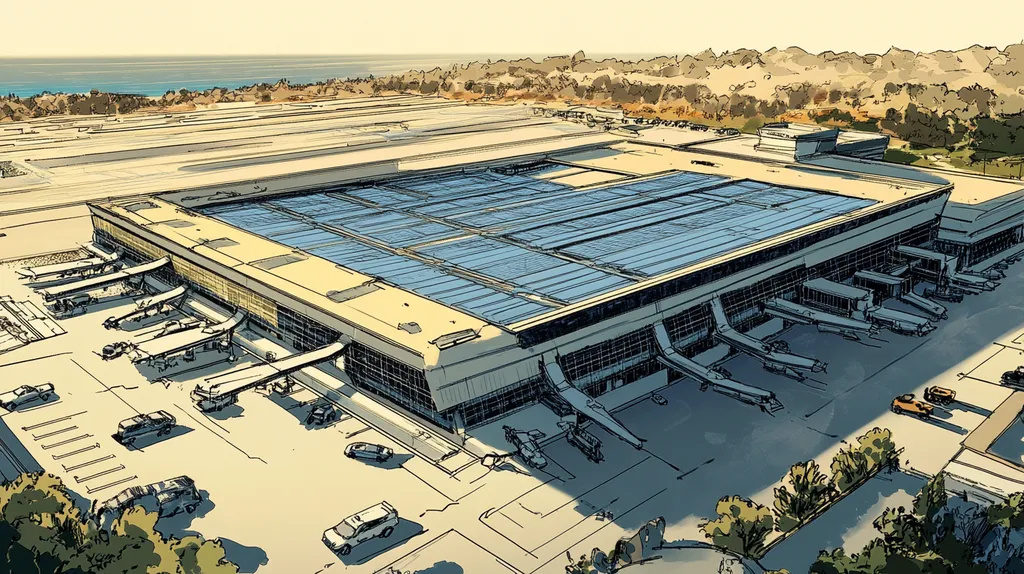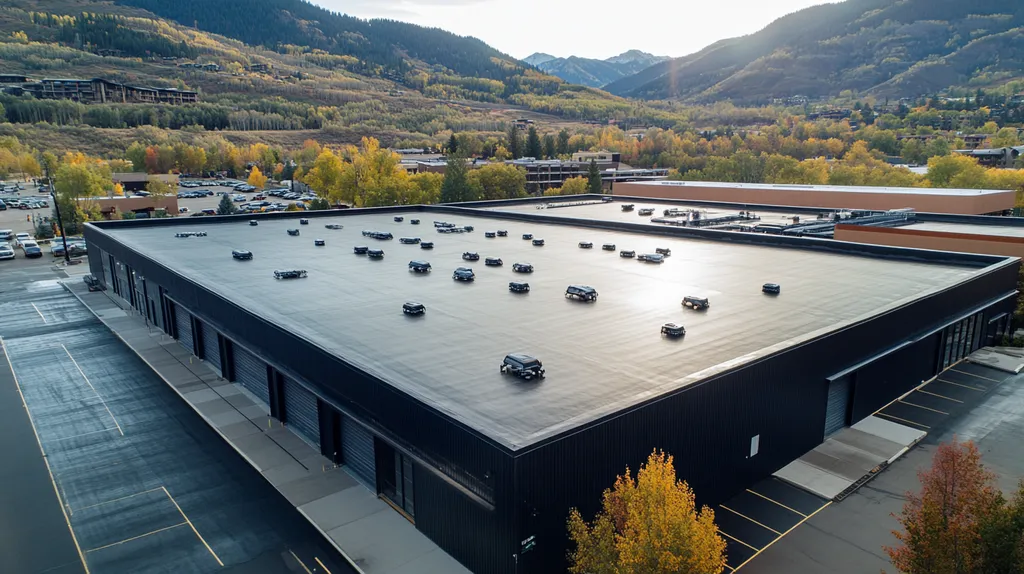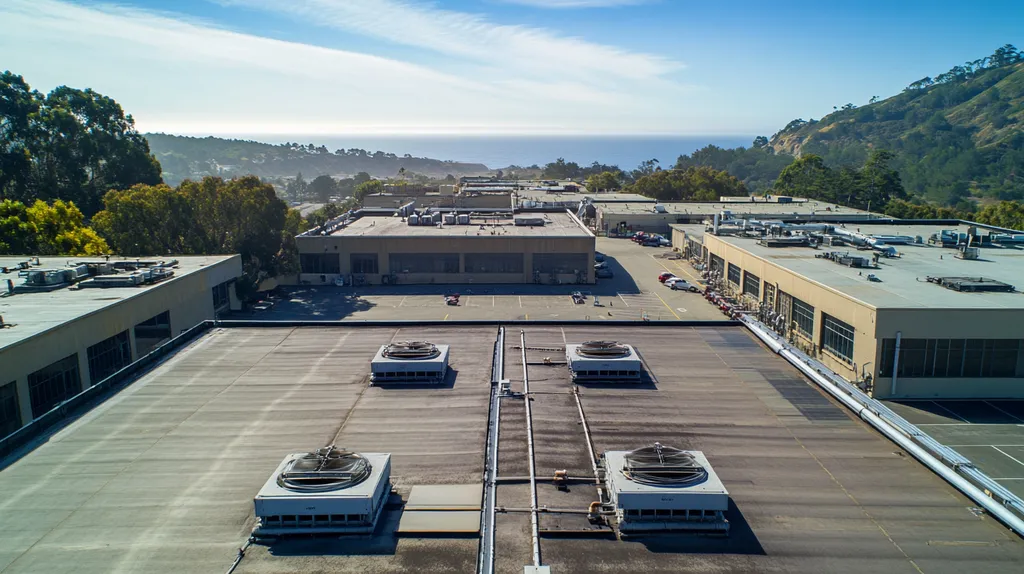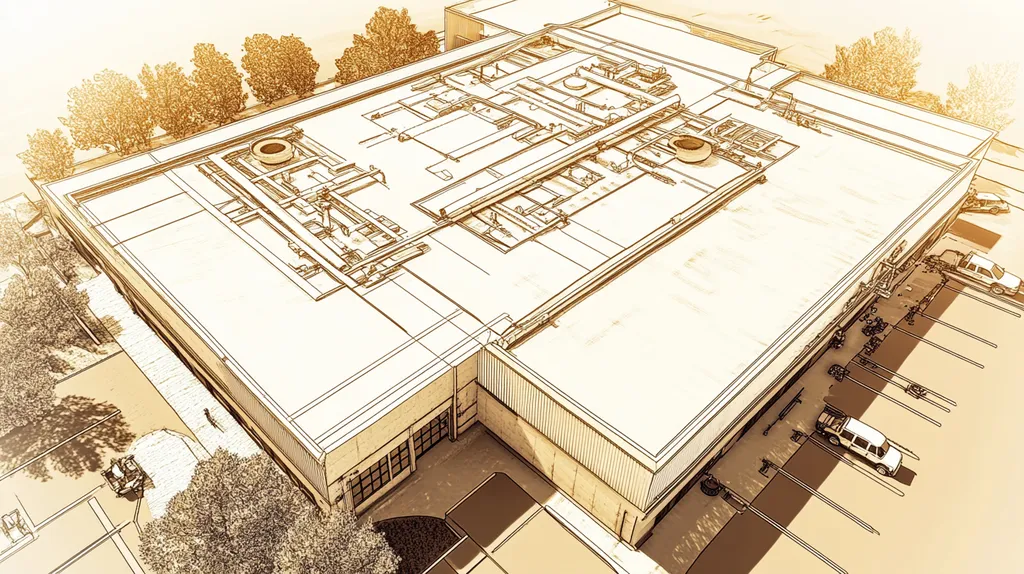Welcome to today’s Battle Royale featuring two roofing heavyweights: “Pressure Washing” in the east corner versus “Soft Washing” in the west!
Tonight’s showdown pits these contenders against each other across six punishing rounds designed to test every aspect of their performance for Routine Cleaning for Commercial Roof Performance.
At stake? Millions in potential costs, decades of building protection, and the critical performance demands of modern commercial and industrial facilities.
Our professional judging panel will evaluate each round on technical merit, real-world performance, and value delivery. After all six rounds, we’ll declare our ultimate champion.
Ladies and gentlemen, facility managers and building owners… it’s time to rumble!
ROUND 1: INITIAL COSTS & INSTALLATION
The choice between pressure washing and soft washing can significantly impact a commercial building’s maintenance budget and roof longevity. Making the wrong decision not only affects immediate costs but can lead to expensive repairs and premature roof replacement. Property managers must carefully weigh the initial investment against long-term performance benefits.
Material Expenses
Initial material expenses vary significantly between pressure washing and soft washing systems. Pressure washing equipment requires substantial upfront investment in industrial-grade machines, specialized nozzles, and safety equipment.
Soft washing systems generally cost less initially, requiring lower-pressure pumps and gentler cleaning solutions. The specialized biodegradable chemicals used in soft washing, while not inexpensive, typically cost less than maintaining pressure washing equipment.
Regular drain maintenance is crucial for both methods, as clogged drains can cause standing water that reduces roof lifespan. However, soft washing’s gentler approach requires fewer protective materials to prevent damage. (source: WilmingtonBiz)
For material expenses, soft washing claims an “ADVANTAGE” due to lower equipment costs and reduced need for protective materials.
Installation Complexity
The complexity of installation directly impacts labor costs and project efficiency. Pressure washing requires extensive setup time, including careful pressure calibration and multiple safety protocols to prevent damage.
Soft washing offers a more straightforward application process, with fewer technical requirements and safety concerns. The simpler setup allows teams to begin cleaning sooner and work more efficiently.
While both methods require trained professionals, soft washing’s gentler approach reduces the risk of operator error and minimizes the chance of damage during application.
Soft washing earns an “ADVANTAGE” in installation complexity due to its simpler application process.
Project Timeline
Project duration significantly affects facility operations and overall costs. Pressure washing typically requires longer setup times and slower application to prevent damage from high-pressure water.
Soft washing projects can often be completed more quickly due to simpler setup requirements and faster application methods. The reduced complexity means fewer delays and faster project completion.
Weather considerations affect both methods, but soft washing’s lower water volume makes it less susceptible to weather-related delays.
In project timeline efficiency, soft washing gains another clear “ADVANTAGE.”
ROUND 1 WINNER: SOFT WASHING
ROUND 2: DURABILITY & LIFESPAN
Commercial roof durability directly impacts business operations and long-term facility costs. Every cleaning decision affects structural integrity, weather resistance, and ultimate lifespan. With replacement costs for commercial roofs ranging from $50,000 to over $1 million, choosing the right maintenance approach becomes crucial for protecting this vital asset.
Material Impact Assessment
The interaction between cleaning methods and roofing materials significantly influences long-term performance. Pressure washing’s high-force approach can strip protective coatings and compromise surface integrity, especially on older roofs.
Some property managers believe pressure washing provides deeper cleaning, but this aggressive approach often damages waterproof membranes and loosens essential sealants. Over time, these impacts accumulate, leading to premature aging.
Soft washing uses gentle chemical solutions that eliminate contaminants while preserving protective coatings. This method effectively removes debris without compromising roof structure or materials.
For material impact, soft washing claims an “ADVANTAGE” by maintaining structural integrity while achieving thorough cleaning.
Weather Resistance
A roof’s ability to withstand weather extremes depends heavily on maintaining its protective layers. Regular cleaning ensures proper drainage and prevents deterioration, but the method matters significantly.
Pressure washing can create micro-fissures in roofing materials, allowing moisture penetration during freeze-thaw cycles. These seemingly minor damages compound over time, reducing weather resistance.
Soft washing maintains the roof’s natural weather barriers while removing harmful buildups. This preservation of protective layers ensures continued resistance against rain, snow, and UV exposure.
Regarding weather resistance, soft washing earns another clear “ADVANTAGE.”
Lifecycle Performance
Long-term performance depends on maintaining consistent cleaning practices that protect rather than degrade roofing materials. Proper drain maintenance proves especially crucial, as clogged drains lead to standing water that significantly reduces roof lifespan. (source: WilmingtonBiz)
Pressure washing’s aggressive nature often requires more frequent cleaning cycles due to surface damage, leading to increased maintenance costs. These repeated high-pressure applications accelerate wear patterns across the roof surface.
Soft washing provides effective cleaning while supporting natural aging processes. This gentler approach extends maintenance intervals and promotes more predictable lifecycle performance.
For lifecycle performance, soft washing demonstrates another “ADVANTAGE.”
ROUND 2 WINNER: Soft Washing
ROUND 3: PERFORMANCE FACTORS
The performance of commercial roofing systems hinges critically on proper maintenance and cleaning protocols. With replacement costs reaching millions of dollars, choosing the right cleaning method becomes a crucial decision that impacts both immediate functionality and long-term durability. Property managers must carefully evaluate how different cleaning approaches affect their roofing investment.
Effectiveness in Removing Debris and Stains
Most commercial roofing problems begin with accumulated dirt, debris, and biological growth that compromise roof integrity. Regular cleaning prevents moisture retention and potential structural damage, but the method’s effectiveness varies significantly. (source: Renovaroofing)
Pressure washing delivers immediate visual results through sheer force, blasting away surface contamination and stubborn stains. However, this aggressive approach can force water under roofing materials and create pathways for future leaks.
Soft washing combines gentle water pressure with specialized cleaning solutions that break down biological growth and lift embedded dirt. This method thoroughly cleanses without compromising roofing materials or creating potential leak points.
For overall cleaning effectiveness while preserving roof integrity, soft washing claims the ADVANTAGE.
Environmental Impact
Modern facility management requires careful consideration of environmental impact and resource conservation. Cleaning methods significantly affect water usage, chemical runoff, and energy consumption.
Pressure washing consumes substantial water volume and often requires harsh cleaning agents to achieve desired results. The high-pressure application creates significant overspray and can distribute contaminants across a wider area.
Soft washing utilizes biodegradable cleaning solutions and dramatically less water volume. This approach minimizes environmental impact while effectively treating the root causes of roof contamination.
In environmental considerations, soft washing demonstrates a clear ADVANTAGE.
Long-Term Cost Efficiency
The true cost of roof cleaning extends far beyond initial service fees. Long-term financial impact includes energy efficiency, repair frequency, and overall roof lifespan.
Pressure washing’s aggressive nature often leads to increased maintenance requirements and potential repair costs. The risk of damage during cleaning can accelerate the need for roof replacement.
Soft washing’s gentle approach helps maintain roof integrity while extending maintenance intervals. This preservation of roofing materials and reduced frequency of service translates to significant long-term savings.
For long-term cost efficiency, soft washing earns another ADVANTAGE.
ROUND 3 WINNER: SOFT WASHING
ROUND 4: MAINTENANCE REQUIREMENTS
Proper maintenance of commercial roofing systems represents a critical investment in building infrastructure protection. Without appropriate cleaning protocols, roofs can deteriorate rapidly, leading to expensive repairs, compromised safety, and potential business disruptions. The choice between pressure washing and soft washing significantly impacts maintenance effectiveness and long-term roof performance.
Cleaning Frequency and Ease
Regular cleaning prevents the buildup of debris, mold, and algae that can degrade roofing materials over time. Keeping your commercial roof clean isn’t just about appearances – it’s about protecting your investment and ensuring optimal performance. (source: O’Donnell Roofing)
Pressure washing typically requires more frequent applications due to its aggressive nature. The forceful water action can strip protective coatings, necessitating additional cleaning cycles to maintain appearance and functionality.
Soft washing’s chemical-based approach provides longer-lasting results by eliminating biological growth at its source. This method requires fewer cleaning cycles while maintaining consistent protection against contamination.
For cleaning frequency and ease, soft washing claims the “ADVANTAGE” due to extended intervals between maintenance cycles.
Impact on Roof Longevity
The relationship between cleaning methods and roof lifespan directly affects facility management budgets. Choosing the wrong approach can accelerate material degradation and compromise structural integrity.
Pressure washing’s high-force application risks damaging roofing materials, particularly on aging surfaces. This aggressive cleaning method can dislodge protective granules and create vulnerabilities in roofing membranes.
Soft washing preserves roofing materials while effectively removing contaminants. The gentle application prevents mechanical wear while achieving thorough cleaning results.
In terms of impact on roof longevity, soft washing demonstrates clear “ADVANTAGE.”
Cost of Maintenance
Total maintenance costs encompass both immediate cleaning expenses and long-term implications for roof integrity. Smart maintenance choices can significantly reduce lifetime ownership costs.
Pressure washing often appears cost-effective initially but generates higher long-term expenses. More frequent cleaning requirements and potential repair needs offset any initial savings.
Soft washing may cost more per application but delivers superior value through extended cleaning intervals and reduced repair requirements. The preservation of roofing materials translates to substantial lifetime savings.
For maintenance cost efficiency, soft washing earns another “ADVANTAGE.”
ROUND 4 WINNER: SOFT WASHING
ROUND 5: SUSTAINABILITY CREDENTIALS
In today’s commercial real estate landscape, sustainability isn’t just an environmental concern – it’s a critical business imperative. With rising energy costs and increasing regulatory pressure, roofing maintenance choices directly impact both environmental compliance and operational costs. The selection between pressure washing and soft washing can mean the difference between meeting sustainability goals or facing costly environmental penalties.
Environmental Impact
Water conservation and chemical runoff have become primary concerns for commercial property managers. Pressure washing systems typically consume between 3-8 gallons per minute, potentially using thousands of gallons of water for a single cleaning session.
The high pressure not only wastes water through overspray but can also dislodge harmful contaminants that end up in stormwater systems. This method often requires stronger cleaning agents to achieve desired results, increasing the environmental impact.
Soft washing systems use up to 65% less water while relying on environmentally-safe, biodegradable cleaning solutions. The reduced pressure minimizes overspray and allows for more precise application of cleaning agents.
For environmental impact, soft washing claims a clear “ADVANTAGE” through reduced water usage and safer chemical profiles.
Longevity and Material Preservation
Sustainable roofing practices must consider how cleaning methods affect material lifespan. Premature roof replacement due to improper maintenance creates significant environmental waste through increased material consumption and disposal.
Pressure washing’s aggressive approach can accelerate wear on roofing materials, leading to earlier replacement cycles. This increased material turnover contributes to landfill waste and demands more raw materials for replacements.
Soft washing’s gentle approach preserves roofing materials while effectively removing contaminants. By extending roof lifespan, this method reduces waste and conserves resources over time.
Regarding material preservation, soft washing demonstrates another “ADVANTAGE.”
Energy Efficiency Impact
Clean roofs contribute significantly to building energy efficiency. Accumulated dirt and biological growth can reduce reflectivity and increase heat absorption, leading to higher cooling costs.
Pressure washing can damage reflective coatings and protective surfaces, diminishing their energy-saving properties. The aggressive cleaning process may require more frequent reapplication of protective coatings.
Soft washing maintains the integrity of reflective surfaces while removing heat-absorbing contaminants. This preservation of energy-efficient properties helps maintain optimal building performance.
In terms of energy efficiency impact, soft washing earns another “ADVANTAGE.”
ROUND 5 WINNER: SOFT WASHING
ROUND 6: SPECIALIZED APPLICATIONS
Commercial roof cleaning methods must be carefully matched to specific building characteristics and environmental conditions. Poor technique selection leads to accelerated material degradation, increased maintenance costs, and potential structural failures. Understanding the specialized applications of different cleaning approaches helps facility managers protect their roofing investments while ensuring optimal performance.
Material Compatibility
Different roofing materials require specific cleaning approaches to maintain their protective properties. TPO, EPDM, and modified bitumen membranes are particularly susceptible to damage from improper cleaning techniques.
Pressure washing’s aggressive force can erode protective coatings and create micro-tears in membrane surfaces. On aging roofs, this high-pressure approach risks accelerating wear patterns and compromising waterproof barriers.
Soft washing utilizes gentle chemical processes that effectively clean without mechanical abrasion. This approach preserves delicate membranes while removing biological growth and accumulated debris.
For material compatibility, soft washing claims a clear “ADVANTAGE” through its material-preserving approach.
Architectural Considerations
Complex roof designs with multiple penetrations, equipment mounts, and varying slopes require specialized cleaning approaches. Clogged drains near these features can cause standing water that significantly reduces roof lifespan. (source: WilmingtonBiz)
Pressure washing creates challenges around roof penetrations and equipment mounts. The high-pressure spray can force water under flashings and seals, leading to interior leaks.
Soft washing provides better control around architectural features and penetrations. The low-pressure application reduces risks while ensuring thorough cleaning of complex areas.
Regarding architectural considerations, soft washing demonstrates another “ADVANTAGE.”
Surface Contaminants
Different regions face varying challenges from organic growth, industrial fallout, and environmental pollutants. These contaminants require specific removal approaches to prevent long-term damage.
Pressure washing relies solely on mechanical force to remove surface contaminants. While effective for loose debris, this method struggles with biologicals and chemical deposits.
Soft washing combines targeted cleaning agents with gentle application to break down stubborn contaminants. This chemical-mechanical approach provides more thorough cleaning of varied contamination types.
For surface contaminant removal, soft washing earns another “ADVANTAGE.”
ROUND 6 WINNER: SOFT WASHING
AND THE WINNER IS…
After six grueling rounds of technical evaluation, we have our verdict…
In a stunning clean sweep across all categories, SOFT WASHING emerges as our undisputed champion! This technical powerhouse dominated with superior performance in cost efficiency, material preservation, and environmental impact while delivering knockout results in specialized applications.
Soft washing’s victory comes from its masterful combination of gentle yet effective cleaning power, reduced environmental impact, and superior long-term cost benefits. It proved particularly devastating in Rounds 2 and 4, where its material-preserving approach and reduced maintenance requirements left pressure washing struggling to answer the bell.
However, pressure washing remains a contender worthy of respect, particularly in situations requiring immediate heavy-duty cleaning of extremely sturdy surfaces or where biological growth isn’t the primary concern.
IMPORTANT NOTICE: Every commercial property presents unique challenges based on local climate, building design, and specific material requirements. While this analysis provides general guidance, property managers should consult qualified roofing professionals who can evaluate their specific situation and recommend appropriate cleaning protocols.
Ladies and gentlemen, in the high-stakes arena of commercial roof maintenance, remember: The true champion isn’t just the method that wins the match – it’s the solution that best protects your specific roofing investment for the long haul.
FREQUENTLY ASKED QUESTIONS
Q. How do initial costs differ for commercial roof cleaning methods?
A. The costs for pressure washing and soft washing vary significantly. Pressure washing often requires more expensive equipment and safety gear. In contrast, soft washing typically has lower upfront costs, using gentler cleaning solutions that are more economical long-term.
Q. Which method is more durable for my commercial roof?
A. Soft washing is better for durability due to its gentle approach. It preserves protective coatings and the integrity of roofing materials, unlike pressure washing, which can cause damage and reduce lifespan. This helps avoid costly repairs and extends the time between cleaning cycles.
Q. How do pressure washing and soft washing impact commercial roof performance?
A. Soft washing maintains roof performance by protecting materials and ensuring thorough cleaning. Pressure washing, while effective, can create micro-damage that leads to vulnerabilities. Proper cleaning significantly affects roof longevity, energy costs, and overall facility operations.
Q. What are the maintenance requirements for commercial roofs?
A. Soft washing generally requires fewer cleaning cycles than pressure washing due to its lasting effects. Maintaining a clean commercial roof is crucial to prevent issues like mold and moisture buildup. Choosing the right method ensures effective maintenance and longer roof lifespan.
Q. How does roof cleaning affect sustainability in commercial properties?
A. Soft washing is more sustainable as it uses less water and biodegradable solutions. Pressure washing can lead to water waste and chemical runoff, which harms the environment. By selecting appropriate cleaning methods, property managers can meet sustainability goals while ensuring roof efficiency.
Q. Are there specialized applications for different roofing materials?
A. Yes, different roofing materials like TPO or EPDM require specific cleaning approaches. Soft washing is preferable as it avoids abrasive damage while effectively removing contaminants. Matching the cleaning method to the roof material is critical for preserving its lifespan and ensuring optimal performance.
Q. What is the best method for removing algae and mold from commercial roofs?
A. Soft washing is the best method for effectively removing algae and mold. This technique utilizes specialized cleaning solutions that target biological growth without damaging the roof’s materials. Regular soft washing prevents future growth and maintains the roof’s protective integrity.

